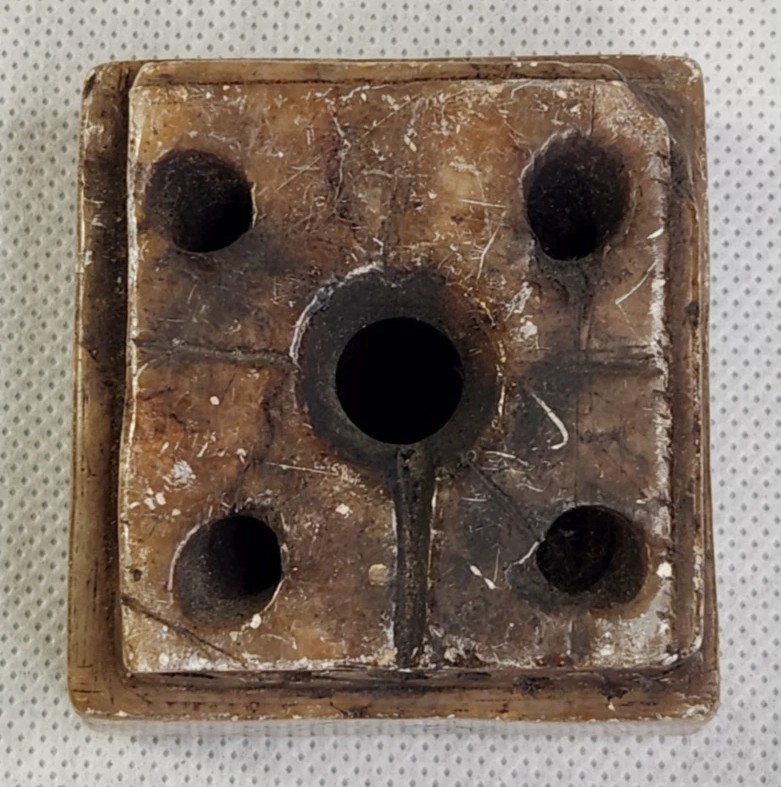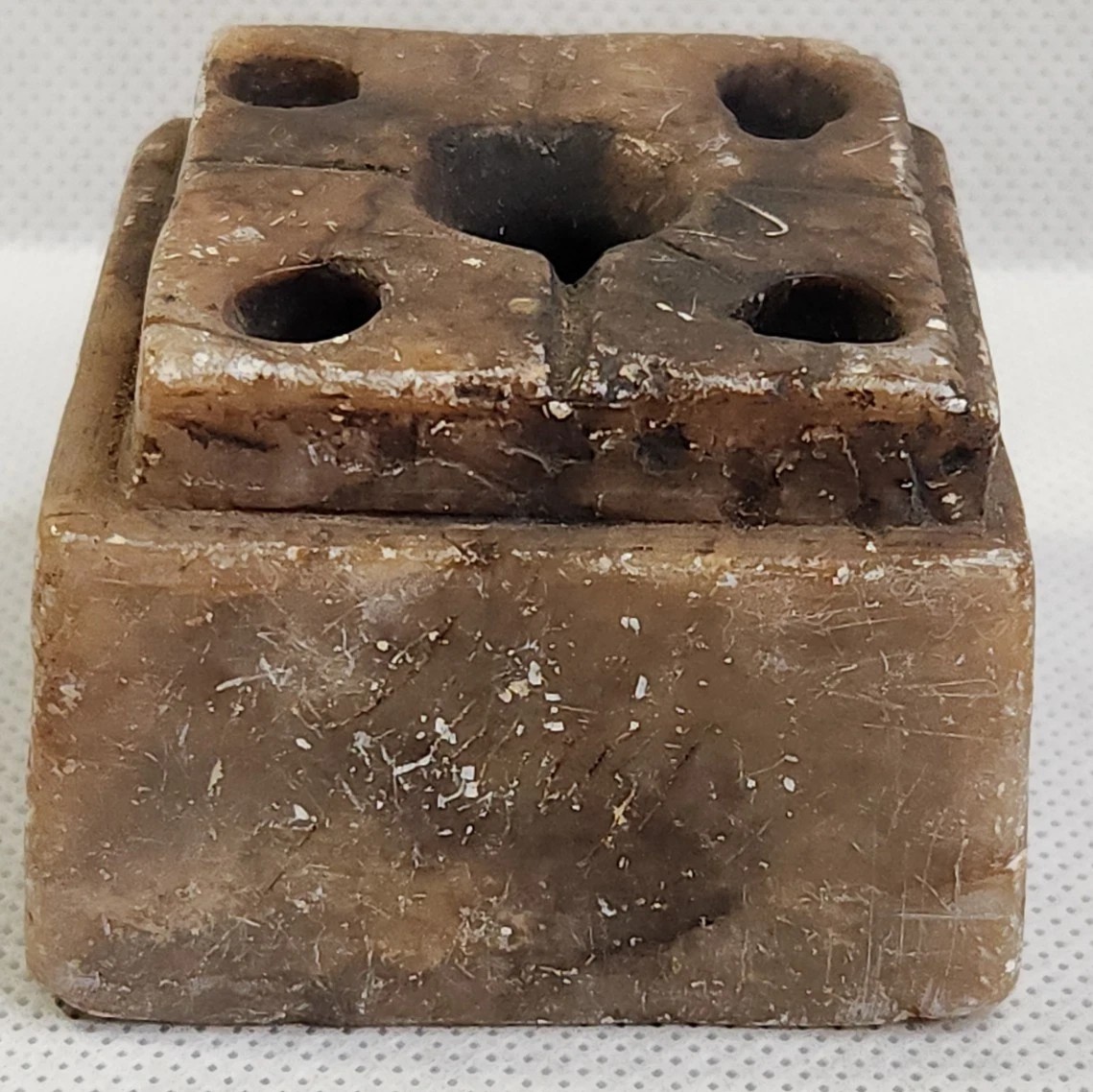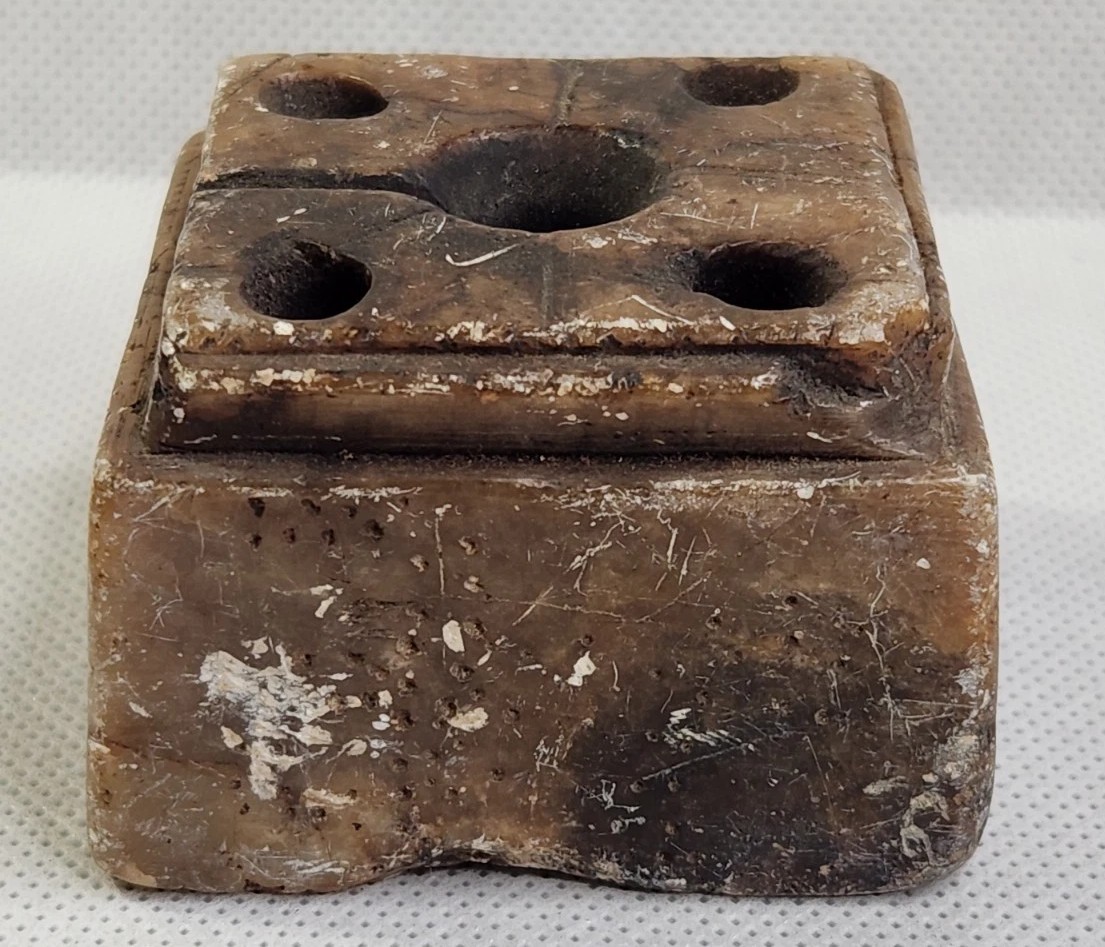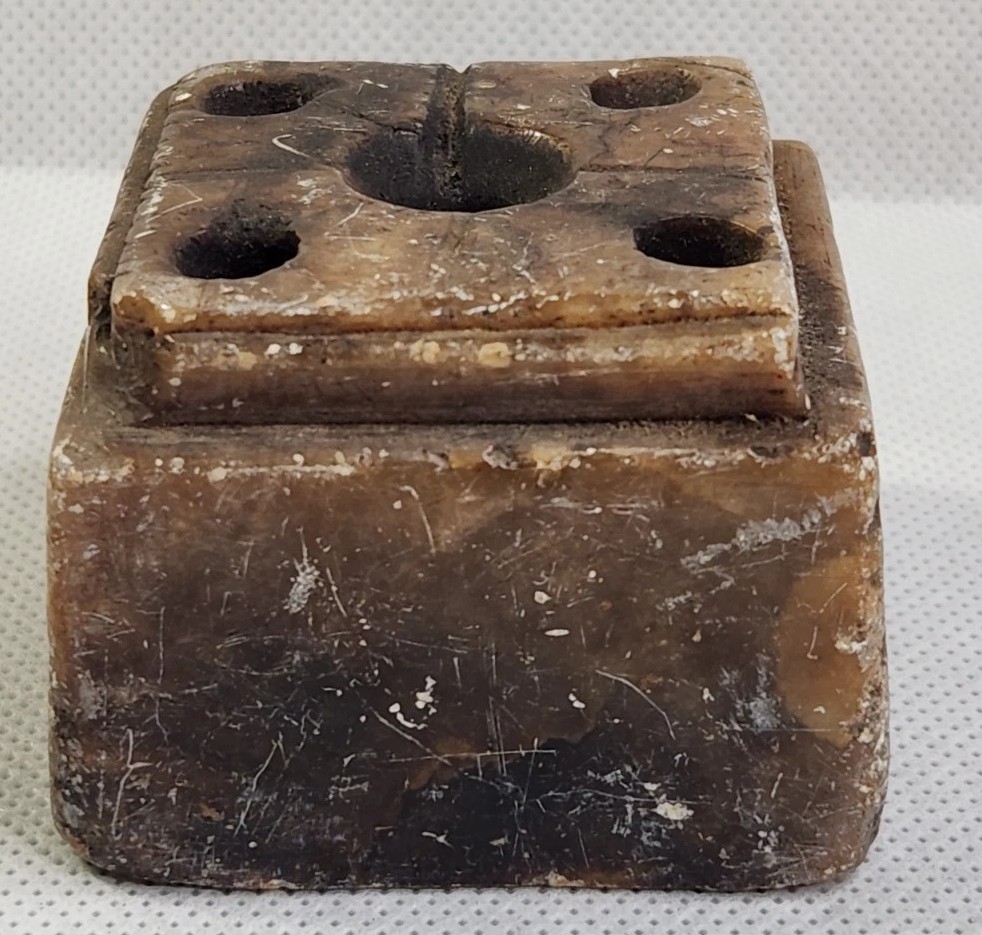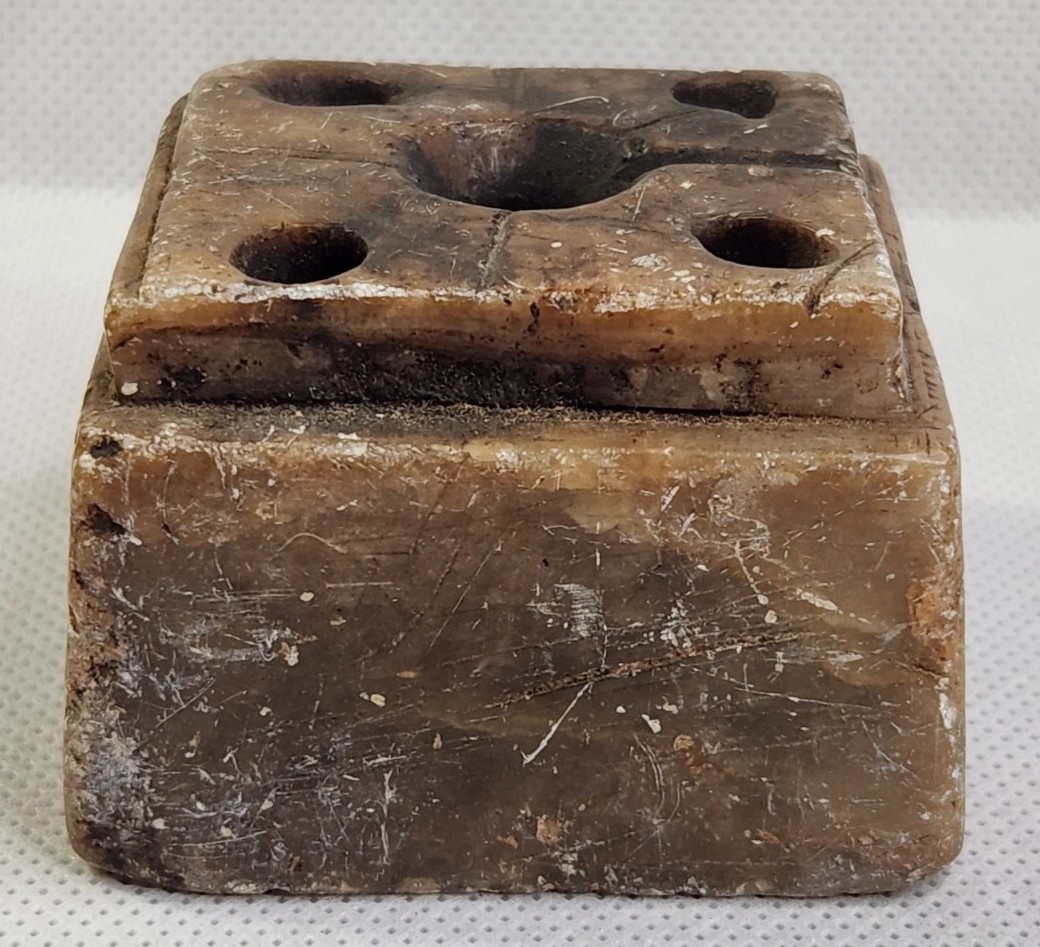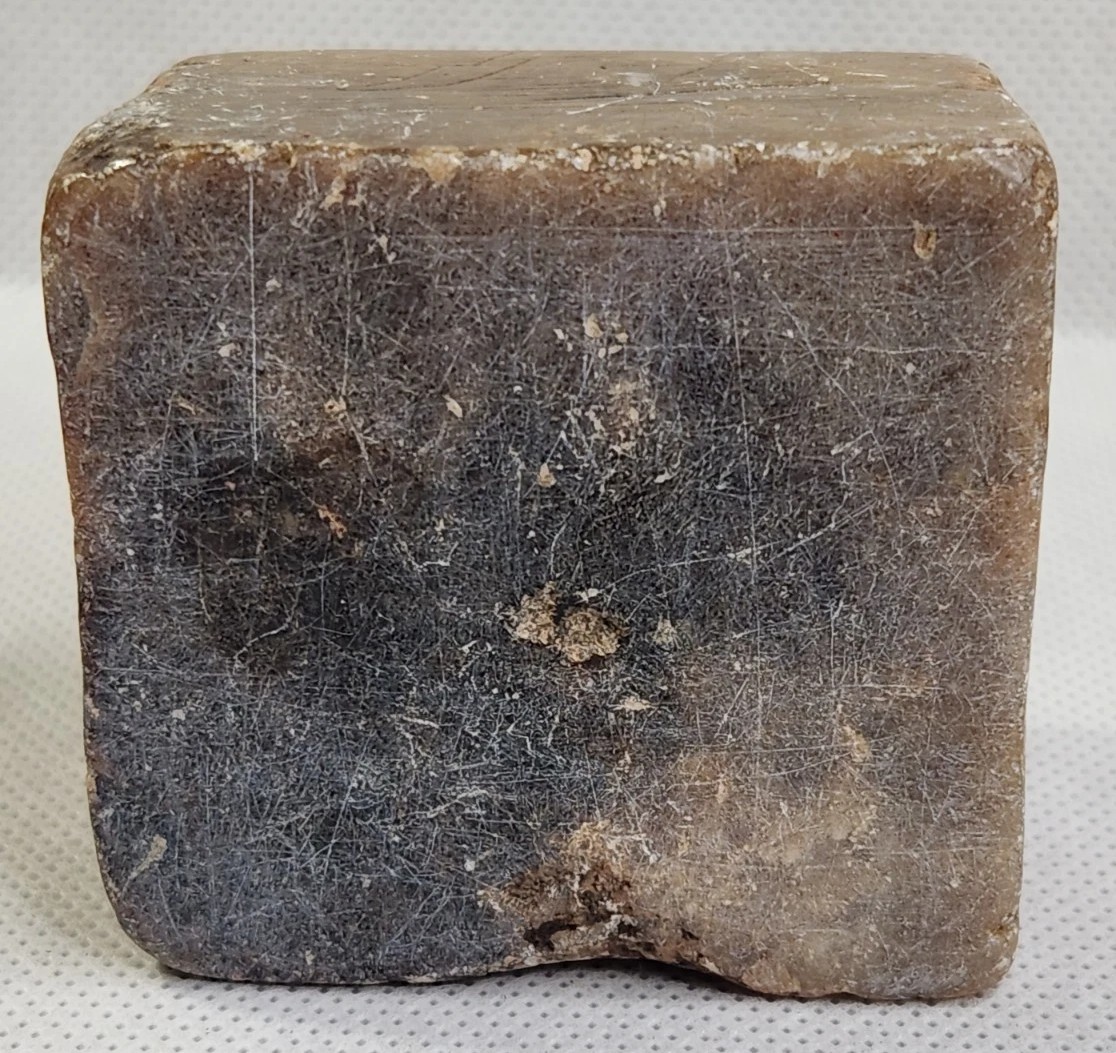
Soapstone Inkwell
| Categories | Early - Primitive |
| Material | Soapstone |
| Markings | Unmarked |
| Origin | United States |
| Date or Era | Late 18th to mid-19th century. |
| Measuring | 2 ¼” x 2 ¼” |
This is a utilitarian inkwell carved from a single block of soapstone, also known as steatite. The stone has a tan to brown color with visible natural veining. The inkwell has a simple, block-like form with a square base and slightly rounded or chamfered corners, giving it a soft-edged appearance.
The design is functional and intended for use with quill pens. It features:
- A deep, circular central well for holding the ink.
- Four small, round quill holes angled in at each corner of the well. These holes were used to store the writing quills when not in use.
The simplicity of the design, combined with the natural beauty of the stone, suggests a handmade, folk-art piece.
Estimated Age
Dating a piece like this is challenging due to its simple and timeless design. However, the presence of quill holes—as opposed to a single hole for a dip pen—suggests an age predating the widespread adoption of metal-nibbed pens in the mid-19th century. Given that it was found in the US, this inkwell could be a piece of early American folk art. A reasonable estimate for its age is the late 18th to mid-19th century.
Historical Context of Soapstone Inkwells
Soapstone, a soft metamorphic rock, has been used for centuries by various cultures for its ease of carving and heat-retention properties. In the context of inkwells, soapstone was an excellent choice for several reasons:
- Practicality: It’s a heavy, stable material, making the inkwell less likely to tip over and spill.
- Availability: Soapstone quarries were active in the United States, particularly in the Eastern states (e.g., Vermont, Pennsylvania, and Virginia), making it a locally accessible material for artisans and settlers.
- Ease of Carving: Its softness allowed for simple tools to be used, making it possible for individuals or small-scale artisans to produce pieces without a large industrial setup.
This type of inkwell represents a period before industrial mass production, when a practical object like an inkwell would often be a handmade item, reflecting the skill and materials available to the maker.
Sold for $111 in July 2025
Content disclaimer. The information posted is the owner’s best knowledge and may not have been vetted by the SOIC. We welcome comments, corrections, and additions, working to make our website information comprehensive and accurate.
Join the Society of Inkwell Collectors (SOIC) – it’s free!
Founded in 1981 as a non-profit organization,
we are documenting inkwells (and accessories).
We’re here to help and inform!

